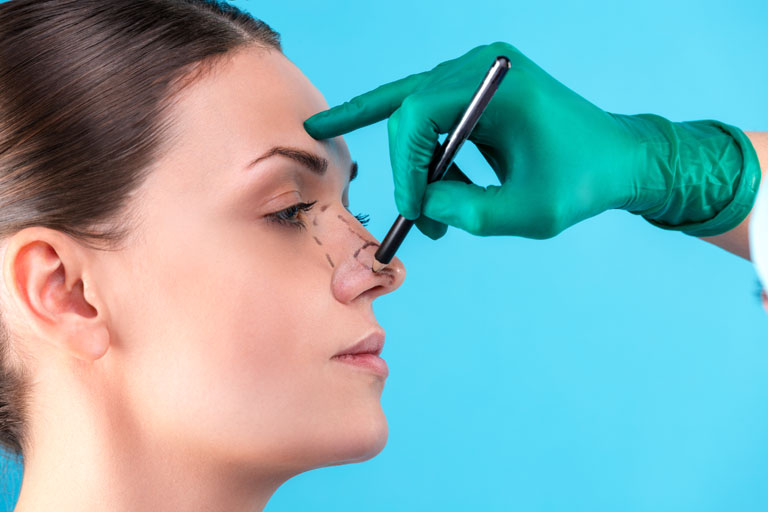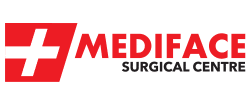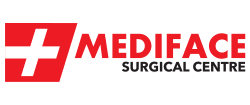The Anatomy of the Nose
Rhinoplasty by definition is the operation where the nose is reshaped and reconstructed. The goal is to make the nose functionally and aesthetically better.
Nose is placed in the middle of the ace and plays a very important role in how our faces look. Every nose has a unique shape; therefore even tiny changes can make a big difference. People want to undergo a rhinoplasty operation to achieve the nose shape they think is ideal. Generally accepted ratios and the harmony between the parts of the face can be the key for a good look. Even though it is accepted that attractive looking people have a symmetrical face, it is impossible to talk about a beauty standard that is accepted by everyone.
One of the most important advantages of a pre-op consultation is that the patient’s expectations and how much of these expectations the surgeon can make sure to meet are discussed. Patients usually act according to their perception of beauty that is developed with social, cultural, and communal effects and they have an instinctive idea of what a nose should look like. Therefore the surgeon has a difficult task: to create nose that will be liked by the patient, the society and the surgeon himself/herself. The surgeons tries to understand if the patient has realistic or unusual/unrealistic expectation by detecting the points the patient gives importance and pays attention to and point out the deformities that need to be fixed on the nose before the rhinoplasty procedure. While doing so, he takes his personal impression, some specific rules, ratios, angles and geometrical relations into consideration. He evaluates cartilage structure, existing scars; age, gender and skin characteristics of the patient. He designs an operation plan according to aesthetic and anatomic evaluations and chooses the technique suited to this plan for the patient to have their ideal nose.
The nose being in the middle of the face both vertically and horizontally has made it the center of attraction. The nose consists of skin, subcutaneous, muscles, bone-cartilage structure and mucosa, respectively, from the outside to the inside. Inside the nose in the nasal midline, there is a wall that is called septum and consists of cartilage and bone. On the outer walls, there are functional structures called concha that heat and humidify the air. Thickness of the skin is one of most important aspects that plays an important role in rhinoplasty results. Bone-cartilage structure is altered during the operation. Where thin skin shows all the alterations under the skin, thick skin may prevent the changes made to be seen. Medium skin thickness is best for a better result.
The Goal of Rhinoplasty
The main goal of the operation is to create a better looking nose that is also suitable with your face. Each and every operation is performed to get better results; however it is unrealistic to expect flawless and perfect results. Post-op results do not only depend on the skills and experience of the surgeon, they also depend on the age, gender, performance status, skin type, bone structure, habits such as smoking, wound healing and anatomic structure of the patient.
How Old Should I be to have the Operation?
Rhinoplasty procedure is an operation that is demanded by young adults aged between 18-35 but also can be successfully performed to people who are in their 50s or 60s. In cases where there is a severe nasal obstruction, the operation can be performed at earlier ages as well.
In boys, the height growth and growth of the face and nose continues until the age of 18. However, girls usually stop growing at the age of 16. Therefore, rhinoplasty can be performed in girls after the age of 16, if necessary, but this age limit is 18 for boys.
Is Rhinoplasty a Difficult Operation?
Yes, rhinoplasty is not an easy operation. It is one of the difficult facial plastic surgeries. It challenges the unique characteristics that every face has. It is the real struggle to reshape the nose suitable with the individuality of the face while protecting or repairing the nasal functions. A successful result can be achieved with a good patient-doctor relationship.
Does Rhinoplasty Affect My Breathing?
It is really important to keep the physiologic functions while trying to achieve an aesthetical nose. In other words, the highly important functions of the nose should not be sacrificed for aesthetic appearance. Normally, rhinoplasty does not cause nasal obstruction. Nasal septum divides the nose into two even pieces and forms the main support mechanism. Septum deviation can be formed due to a trauma or simply because of genetics. Additionally, the enlargement of the concha arising from the lateral nasal wall can cause respiratory problems. The mucous membrane covering the inside of the nose can grow and swell due to allergies and smoking. All these reasons may cause a nasal obstruction in the patient. In this respect, patients should be examined and the examination findings should be explained to the patient. All obstructive reasons should be corrected during surgery because, after rhinoplasty, the air passage narrows by 10-20%.
Should a Photo be taken before the Operation?
Photographs should be taken before the operation. The surgeon photographs from 6 different angles: front view, 2 side, 2 oblique and base. Additional photography can be done according to the patient’s condition. It is necessary to photograph again 6 months and 1 year.

Can I See a Possible Post-op Result?
Every surgeon follows a different way to show a possible post-op result. Mirrors, hand drawings, photos in natural sizes and computer programs can be used in this regard. The computer environment provides an environment where the patient and the surgeon can share their ideas and agree on expectations and results. The image on the computer cannot give a definite and guaranteed result regarding the postoperative situation. The patients should be informed and aware of that.
Will there be Any Scar on My Face after Rhinoplasty?
There are two main approaches in rhinoplasty; endonasal (closed) and external (open) approach. In endonasal approach, no scar forms on the skin since all the incisions are made inside the nose. External approach has become a popular approach thanks to its advantages. In this approach, a V shaped incision is made through the narrowest part of the nostrils. This approach, which does not cause any visible scar, is preferred by 90% of surgeons. It is also possible to have good results with endonasal approach that is performed by experienced surgeons. In conclusion, which approach will be preferred is entirely related to the surgeon and does not have any negative impacts on the patient.
What Should I Avoid before the Operation?
The most important thing is to avoid taking medicine that can cause bleeding such as aspirin. If you have pain, you can take paracetamol or acetaminophen. Do not smoke because it affects the healing by damaging the blood circulation. Have your blood tests, ECG and lung X-ray done. Stop drinking alcohol a few days before and a few weeks after the surgery since it causes congestion and bleeding.
How long will the Post-op Follow-up Take?
Rhinoplasty is an operation with predictable results. The nose is a dynamic organ and the surgeon can predict the shape of the nose after wound healing and in the long term. The surgeon examines the patient at regular intervals according to the patient’s needs, more often in the first 3 weeks. Routine follow-up protocol is to check the patient on the 6th week, 3rd month, 6th month, 1st year, and then once a year. With this protocol, the patient and the surgeon can evaluate the results of the surgery together.
In Mediface Surgical Centre Antalya, Turkey, we expect our patients on the 7th day after the surgery for their cast and stitches removal. Then they come back 5 days after to get their plasters removed or if they remove them by themselves, they visit the clinic for a check-up. We also advise them to come on the 1st month, 6th month and 1st year after the surgery. If they live abroad, we video call or discuss over the photos our patients send us.






